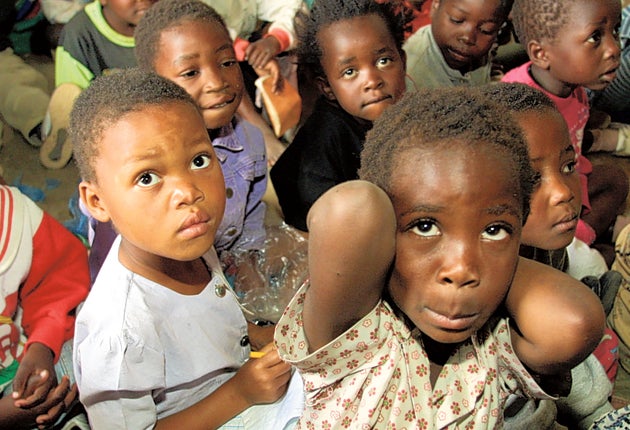Anti-retroviral drugs 'could be best hope of curbing Aids'

The spread of Aids can be dramatically curbed by the use of anti-retroviral drugs which cut transmission of the disease by more than 90 per cent, a study has found.
As well as extending the lives of those already infected with the virus, the drugs make the likelihood of their sexual partners being infected extremely small. The finding has huge implications for the management of the pandemic in sub-Saharan Africa, the worst affected region of the world. It also lends support to claims that the use of anti-retroviral drugs offers the best hope for eradicating the pandemic that has claimed more than 25 million lives worldwide.
A vaccine against Aids remains a distant dream, and other methods including vaginal microbicides have proved disappointing. In seeking ways to prevent the spread of the disease – other than by abstinence, male circumcision or the use of condoms – drugs may now offer the best hope.
Anti-retroviral drugs have transformed the outlook for sufferers with HIV by extending lives to a near normal span. But their value as a preventive measure in curbing – or even eliminating – the spread of the disease has not been recognised until recently.
At the annual meeting of the American Association for the Advancement of Science in San Diego, California, last February, Brian Williams of the South African Centre for Epidemiological Modelling and Analysis caused a stir when he suggested that an aggressive programme of prescribing anti-retroviral drugs to every person infected with HIV could stop all new infections.
"Our immediate best hope is to use [the drugs] not only to save lives but also to reduce transmission of HIV. I believe we could effectively stop transmission of HIV within five years... and eliminate [the infection] within 40 years. The problem is that we are using the drugs to save lives, but we are not using them to stop transmission," he said.
Support for his claim comes today with the publication in The Lancet of the results of a study of almost 3,400 heterosexual couples, each having one HIV infected partner and one not, from seven countries in sub-Saharan Africa.
After two years of treatment of the HIV-positive infected individuals with antiretroviral drugs, the researchers found the rate of infection in their partners was 92 per cent lower than in those untreated. All the participants began the study with a CD4 cell count, a measure of the severity of the infection, above the threshold of 200 and so would not normally have qualified for the drugs.
Deborah Donnell and her colleagues at the International Clinical Research Centre at the University of Washington say the finding could give impetus to the use of anti-retroviral drugs "as a prevention strategy".
They say 70 per cent of infections were transmitted by partners with the highest viral load (above 50,000 per ml) and that targeting this group would be the best use of resources – after treating those with a CD4 cell count below 200.
In an accompanying commentary, Francois Dabis and his colleagues at the Institute of Public Health at the University of Victor Segalen in Bordeaux, France, say the time for waiting is over and countries should "test and treat" their populations without delay.
"During the one hour it takes to read this article [in The Lancet], 300 new HIV infections will have occurred in Africa. We should not wait for the results of further... studies. Today's results argue powerfully for a new generation of research on HIV prevention at population level."
Anti-retroviral drugs have to be taken daily for life. Prices have fallen dramatically over the last decade, yet still less than half of those who should be getting them for clinical reasons are doing so. Rolling out treatments more widely, for preventive purposes, would cost more than most governments can afford. But backers of the idea argue that the cost of not doing so will be higher in the long run.
HIV/Aids in numbers
33.4 million People living with HIV/Aids in 2008
31.3 million Adults living with HIV/Aids in 2008
15.7 million Women living with HIV/Aids in 2008
2.1 million Children living with HIV/Aids in 2008
2.7 million People newly infected with HIV in 2008
0.43 million Children newly infected with HIV in 2008
2 million Aids deaths in 2008
0.28 million Child Aids deaths in 2008
9.5 million People are in immediate need of life-saving Aids drugs
4 million (42 per cent) Are receiving the drugs
More than 25 million people have died of Aids since 1981
Join our commenting forum
Join thought-provoking conversations, follow other Independent readers and see their replies
Comments